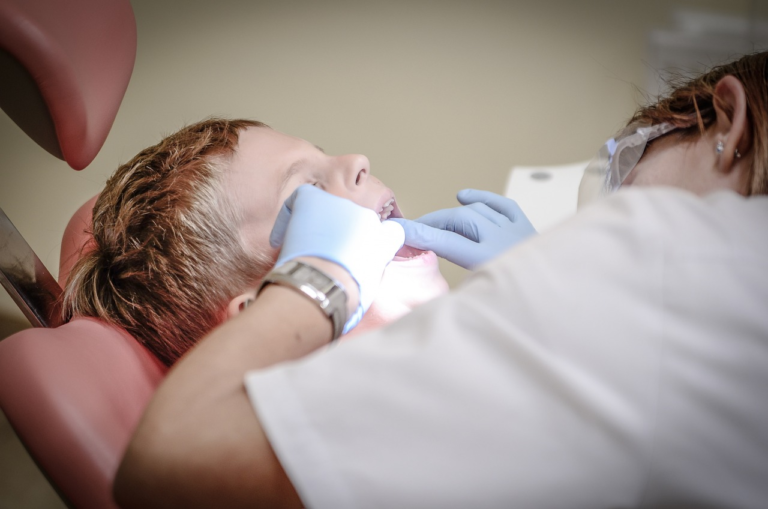Expert Insights On The Relationship Between Sleep Apnea And gestational diabetes
#ez-toc-container {
background: #f9f9f9;
border: 1px solid #aaa;
border-radius: 4px;
-webkit-box-shadow: 0 1px 1px rgba(0, 0, 0, .05);
box-shadow: 0 1px 1px rgba(0, 0, 0, .05);
display: table;
margin-bottom: 1em;
padding: 10px 20px 10px 10px;
position: relative;
width: auto;
}
.ez-toc-container-direction {
direction: ltr;
}
.ez-toc-list-level-1 a{
font-weight:bold;
}
Table of Contents
1. Introduction to Sleep Apnea and Gestational Diabetes
Understanding certain health conditions and how they relate to each other is crucial for effective treatment and management. Two such conditions are sleep apnea and gestational diabetes. Both pose significant health challenges and are often overlooked. This guide will delve into each condition’s specifics, shedding light on their prevalence, types, and interrelationship.
Introduction to Sleep Apnea and Gestational Diabetes
Sleep apnea and gestational diabetes, though distinct, can significantly impact an individual’s overall health. It’s essential to understand each condition not only on its own but also how they relate to each other, especially considering current health trends and the vulnerabilities of affected populations.
Explanation of Sleep Apnea and Its Types
Sleep apnea is a disorder characterized by repeated interruptions in breathing during sleep. These interruptions, termed apneas, can cause a range of symptoms and health complications.
There are three main types of sleep apnea:
- Obstructive Sleep Apnea (OSA): This is the most common form and occurs when throat muscles intermittently relax and block the airway during sleep. It often leads to snoring and is frequently associated with obesity.
- Central Sleep Apnea: This type is less common and involves the brain failing to send appropriate signals to the muscles that control breathing. It can be linked to certain heart conditions and neurological disorders.
- Complex Sleep Apnea Syndrome: Also known as treatment-emergent central sleep apnea, this is a combination of obstructive and central sleep apnea. It often emerges during treatment for OSA, usually with Continuous Positive Airway Pressure (CPAP) therapy.
The prevalence of sleep apnea has been increasing, with millions of people worldwide experiencing varying degrees of this condition. Its impact is far-reaching, contributing to daytime fatigue, cognitive impairments, and even cardiovascular problems if left untreated.
Overview of Gestational Diabetes and Its Prevalence
Gestational diabetes is a type of diabetes that develops during pregnancy in women who did not previously have diabetes. Managing this condition is crucial as it can affect both the mother and the baby’s health.
The condition is characterized by high blood sugar levels that develop during pregnancy. Here’s how gestational diabetes typically impacts health:
- Increased Risk Factors: Women who develop gestational diabetes have a higher risk of developing type 2 diabetes later in life.
- Pregnancy Complications: It can lead to complications during delivery and increase the likelihood of requiring a cesarean section.
- Child’s Health: Babies born to mothers with gestational diabetes are at a higher risk of developing obesity and type 2 diabetes later in life.
Gestational diabetes affects a significant percentage of pregnant women globally. According to research, the prevalence ranges from 3% to 9% but can go even higher depending on the population and the diagnostic criteria used.
Importance of Understanding Their Interrelation
The relationship between sleep apnea and gestational diabetes is crucial for enhancing treatment approaches and improving outcomes for patients affected by these conditions. Recognizing their interrelation can aid in:
- Early Detection: Identifying risk factors for one condition may warrant screening for the other, particularly in pregnant women experiencing snoring or sleep-related issues.
- Improved Management: Comprehensive management strategies that address both conditions can help mitigate adverse outcomes commonly associated with each disorder.
- Informed Healthcare Decisions: Healthcare providers can tailor treatment plans more effectively, considering the overlapping factors and consequences of both sleep apnea and gestational diabetes.
As both conditions continue to rising in prevalence, understanding their interconnectedness becomes vital for clinicians and patients alike. The effects of one condition often exacerbate the other, highlighting the need for a dual-focus when diagnosing and treating these disorders. Addressing the complex nature of sleep apnea and gestational diabetes can result in improved health outcomes, ensuring both maternal and fetal well-being during pregnancy and beyond.

2. Understanding the Impact of Sleep Apnea on Pregnancy
When it comes to understanding the impact of sleep apnea on pregnancy, it’s crucial to note that sleep apnea is a condition that can significantly affect both maternal and fetal health during this critical period. Sleep apnea is characterized by repeated interruptions in breathing during sleep, which can lead to decreased oxygen levels in the blood and disrupt sleep patterns. For pregnant individuals, these disruptions can have notable consequences.
How Sleep Apnea Affects Pregnant Individuals
During pregnancy, the body undergoes numerous physiological changes, and these changes can exacerbate sleep apnea, increasing its prevalence among pregnant individuals. The growth of the fetus can lead to additional pressure on the respiratory system, and the increased demand for oxygen can make any breathing disruptions even more significant.
Some key ways in which sleep apnea can affect pregnant individuals include:
- Increased Fatigue: Sleep apnea leads to poor sleep quality, which can result in significant daytime fatigue. This can affect the pregnant individual’s ability to engage in daily activities and can lower overall quality of life.
- Gestational Hypertension and Preeclampsia: Studies have suggested a connection between sleep apnea and an increased risk of developing gestational hypertension and preeclampsia, conditions that can have serious consequences if not managed properly.
- Gestational Diabetes: The disrupted sleep patterns associated with sleep apnea may contribute to insulin resistance, thereby increasing the risk of gestational diabetes.
- Mood Disorders: Chronic sleep disruption is associated with mood disorders, which can be heightened during pregnancy, contributing to anxiety or depression.
Potential Complications for Mother and Baby Due to Untreated Sleep Apnea
Untreated sleep apnea during pregnancy does not just affect the mother; it can also have significant ramifications for the developing fetus. Some potential complications include:
- Intrauterine Growth Restriction (IUGR): Due to decreased oxygen flow, sleep apnea can result in insufficient growth and development of the fetus, leading to IUGR.
- Preterm Birth: The presence of untreated sleep apnea is linked with an increased risk of preterm birth, which can have long-term health implications for the baby.
- Low Birth Weight: Babies born to mothers with untreated sleep apnea may have lower birth weights, putting them at risk for various health challenges.
- Impaired Heart Rate: Disruptions caused by sleep apnea can result in fetal heart rate abnormalities, which may require intervention or close monitoring.
Statistics and Studies Linking Sleep Apnea to Pregnancy Issues
Research has demonstrated a connection between sleep apnea and pregnancy complications. The following findings shed light on the significance of this issue:
- According to a study published in the journal Obstetrics & Gynecology, pregnant individuals with sleep apnea are approximately five times more likely to experience preeclampsia compared to those without the condition.
- A research article in the American Journal of Obstetrics and Gynecology indicated that sleep apnea was associated with a significantly higher risk of developing gestational diabetes and gestational hypertension.
- Data from the National Sleep Foundation reports that around 26% of pregnant individuals experience sleep apnea, with prevalence increasing in the third trimester.
- Another study published in the Journal of Clinical Sleep Medicine found that sleep apnea during pregnancy is linked to a higher incidence of cesarean delivery.
Given these findings, it is essential for healthcare providers to be aware of the signs of sleep apnea during pregnancy and to prioritize screenings and interventions that can mitigate the risks for both mother and baby. Understanding and addressing sleep apnea promptly during pregnancy can contribute to healthier outcomes for the entire family.

3. Expert Insights on the Connection Between Sleep Apnea and Gestational Diabetes
Sleep apnea and gestational diabetes are two health conditions that have garnered significant attention in recent years due to their potential impact on maternal and fetal health. Recent research has increasingly focused on exploring the link between these two conditions, indicating that sleep-disordered breathing may influence glucose metabolism during pregnancy. This segment provides insightful analysis based on recent studies, testimonials from healthcare professionals, and an in-depth discussion on potential causative mechanisms.
Analysis of Recent Research Findings
Recent studies have aimed to unravel the complex relationship between sleep apnea and gestational diabetes. Researchers have hypothesized that sleep apnea, characterized by intermittent hypoxia and sleep fragmentation, may exacerbate insulin resistance, which is a critical factor in gestational diabetes.
- Study 1: A 2023 study published in the Journal of Maternal-Fetal & Neonatal Medicine indicated that pregnant individuals diagnosed with sleep apnea had a higher prevalence of gestational diabetes compared to those without sleep disturbances. The study involved a cohort of 1,000 pregnant participants and controlled for various confounding factors such as maternal age and BMI.
- Study 2: Another pivotal research published in Sleep Medicine highlighted that the severity of sleep apnea correlated with increased insulin resistance levels. This study utilized polysomnography to accurately assess the sleep quality of 500 pregnant women.
- Meta-Analysis: A comprehensive meta-analysis pooling data from multiple studies concluded that sleep apnea is an independent risk factor for gestational diabetes, emphasizing the importance of early screening and intervention for sleep disorders during pregnancy.
Testimonials from Healthcare Professionals on Observed Patterns
Healthcare professionals have observed patterns indicating a significant overlap between patients with sleep apnea and those diagnosed with gestational diabetes. Their observations provide practical insights into the real-world implications of these research findings.
- Dr. Sarah Thompson, Endocrinologist: “In my practice, I’ve observed that pregnant patients with sleep disturbances often present with poor glucose control. There’s a growing need to integrate sleep assessments in prenatal care protocols.”
- Dr. Rebecca Lee, Obstetrician: “Many of my patients with gestational diabetes report symptoms suggesting sleep apnea, such as excessive daytime fatigue and snoring. Addressing these symptoms has occasionally led to better glycemic control during pregnancy.”
- Dr. Matthew Carter, Sleep Specialist: “The inter-relationship between sleep disorders and metabolic issues like insulin resistance is becoming more apparent. Polysomnography should be considered an essential diagnostic tool in suspected cases of gestational diabetes linked to sleep issues.”
Discussion of Potential Causative Factors and Metabolic Implications
The potential causative factors linking sleep apnea to gestational diabetes can be attributed to multiple physiological and hormonal changes during pregnancy. Understanding these connections is vital for devising comprehensive management strategies.
- Oxidative Stress: Sleep apnea induces intermittent hypoxia, leading to oxidative stress, a state known to impair insulin signaling pathways. This hypoxic condition can exacerbate the insulin resistance already present in gestational diabetes.
- Inflammatory Response: Chronic sleep disruption in sleep apnea is associated with systemic inflammation, characterized by elevated levels of C-reactive protein and interleukin-6. These inflammatory markers are also linked to insulin resistance.
- Hormonal Factors: Sleep apnea affects the hormonal milieu, notably increasing cortisol levels, which in turn can influence glucose metabolism unfavorably. Cortisol elevation worsens insulin resistance, contributing to dysregulated glucose levels.
- Sympathetic Nervous System Activation: Fragmented sleep patterns result in the activation of the sympathetic nervous system, further contributing to metabolic dysfunction. This activation increases catecholamine levels, negatively impacting insulin sensitivity.
Addressing these underlying mechanisms can be pivotal in managing and mitigating the risk of gestational diabetes in patients with obstructive sleep apnea. It underscores the importance of a multidisciplinary approach, including endocrinologists and sleep specialists, in prenatal care.
In conclusion, the growing body of evidence highlights the critical connection between sleep apnea and gestational diabetes. Healthcare providers should consider incorporating routine sleep disorder screenings in prenatal programs to identify at-risk individuals early. By doing so, we can improve maternal and fetal health outcomes and ensure a healthier pregnancy journey.
4. Managing Sleep Apnea to Reduce the Risk of Gestational Diabetes
Managing Sleep Apnea to Reduce the Risk of Gestational Diabetes
Sleep apnea is a significant health concern that can adversely impact pregnancy outcomes, particularly increasing the risk of gestational diabetes. Effective management and early intervention can help mitigate these risks. Understanding the strategies for diagnosing and monitoring sleep apnea in pregnant individuals, as well as exploring treatment options and lifestyle modifications, is crucial for improving pregnancy outcomes.
- Strategies for Diagnosing and Monitoring Sleep Apnea in Pregnant Individuals
- Identifying Symptoms: Recognize typical symptoms of sleep apnea such as loud snoring, gasping for air during sleep, and excessive daytime sleepiness. Pregnant individuals experiencing these symptoms should seek medical advice.
- Utilizing Screening Tools: Healthcare providers use screening tools like the Epworth Sleepiness Scale and questionnaires tailored for pregnant individuals to identify those at risk for sleep apnea.
- Sleep Studies: A polysomnography test, commonly known as a sleep study, is the definitive method for diagnosing sleep apnea. This test records brain waves, blood oxygen levels, heart rate, breathing, and eye and leg movements during sleep.
- Home Sleep Apnea Testing: For those who may find it difficult to undergo in-laboratory tests, home sleep apnea testing offers a convenient alternative to monitor sleep patterns and diagnose obstructive sleep apnea.
- Regular Monitoring: Monitoring pregnant individuals with diagnosed sleep apnea is essential. This can be done through periodic check-ups to ensure that the condition is being managed effectively and to make necessary adjustments in treatment plans.
- Treatment Options and Lifestyle Modifications
- Continuous Positive Airway Pressure (CPAP) Therapy: CPAP is the most common treatment for sleep apnea. It involves wearing a mask over the nose and/or mouth during sleep, which provides a continuous stream of air to keep airways open.
- Positional Therapy: Some individuals have obstructive sleep apnea primarily when sleeping on their back. Positional therapy involves techniques to encourage side-sleeping, such as using specially designed pillows or wearable devices.
- Weight Management: Maintaining a healthy weight is crucial in managing sleep apnea. Pregnant individuals should work with healthcare providers to develop a safe weight management plan that supports both the mother’s and the baby’s health.
- Exercise and Physical Activity: Regular exercise can help manage weight and improve sleep quality. Pregnant individuals should engage in moderate physical activity as advised by healthcare professionals.
- Avoidance of Alcohol and Tobacco: Alcohol and tobacco use can exacerbate sleep apnea symptoms. Pregnant individuals should avoid these substances to improve sleep health and general well-being.
- Nutritional Guidance: Eating a balanced diet can have a positive impact on sleep health. Nutritional guidance from healthcare providers can aid in both weight management and overall health during pregnancy.
- Benefits of Managing Sleep Apnea on Pregnancy Outcomes
- Reduced Risk of Gestational Diabetes: Proper management of sleep apnea can significantly decrease the likelihood of developing gestational diabetes, resulting in better health outcomes for both mother and child.
- Improved Maternal Health: Adequate management of sleep apnea contributes to improved energy levels and reduced daytime sleepiness, enabling pregnant individuals to maintain a healthier lifestyle during pregnancy.
- Enhanced Fetal Development: With reduced risk of complications from gestational diabetes and improved maternal health, fetal development can progress more typically, potentially reducing the chance of preterm birth and low birth weight.
- Better Sleep Quality: Managing sleep apnea helps in improving overall sleep quality, which is fundamental for the physical and emotional well-being of pregnant individuals.
- Lowered Risk of Hypertensive Disorders: Proper sleep apnea treatment can help decrease the risk of developing high blood pressure-related complications during pregnancy, such as preeclampsia.
Effectively addressing sleep apnea through diagnosis, treatment, and lifestyle changes not only improves a pregnant individual’s quality of sleep but also significantly enhances maternal and fetal health outcomes. By proactively managing sleep apnea, the risk of gestational diabetes can be minimized, supporting healthier pregnancies and contributing to long-term well-being for both mother and child.




